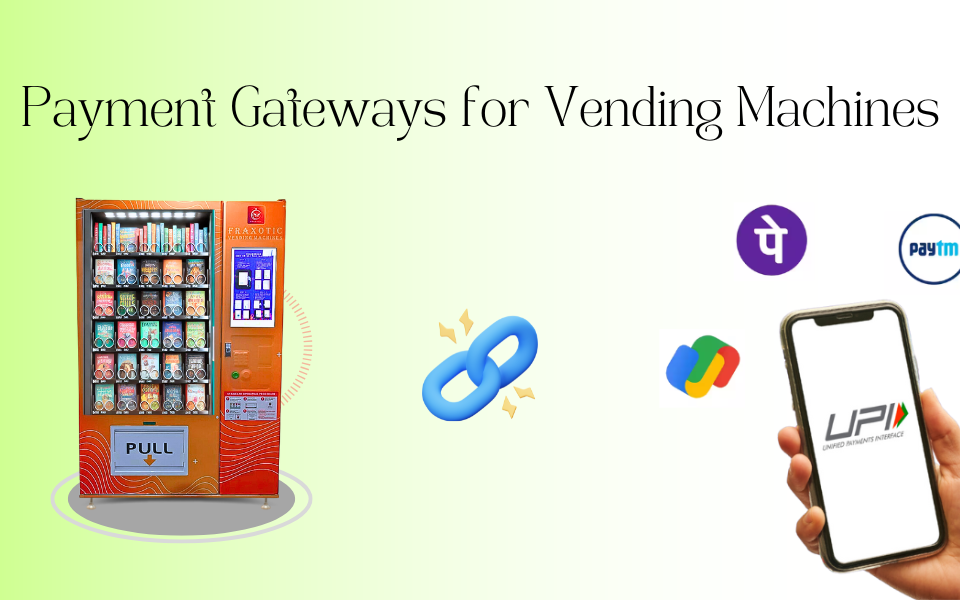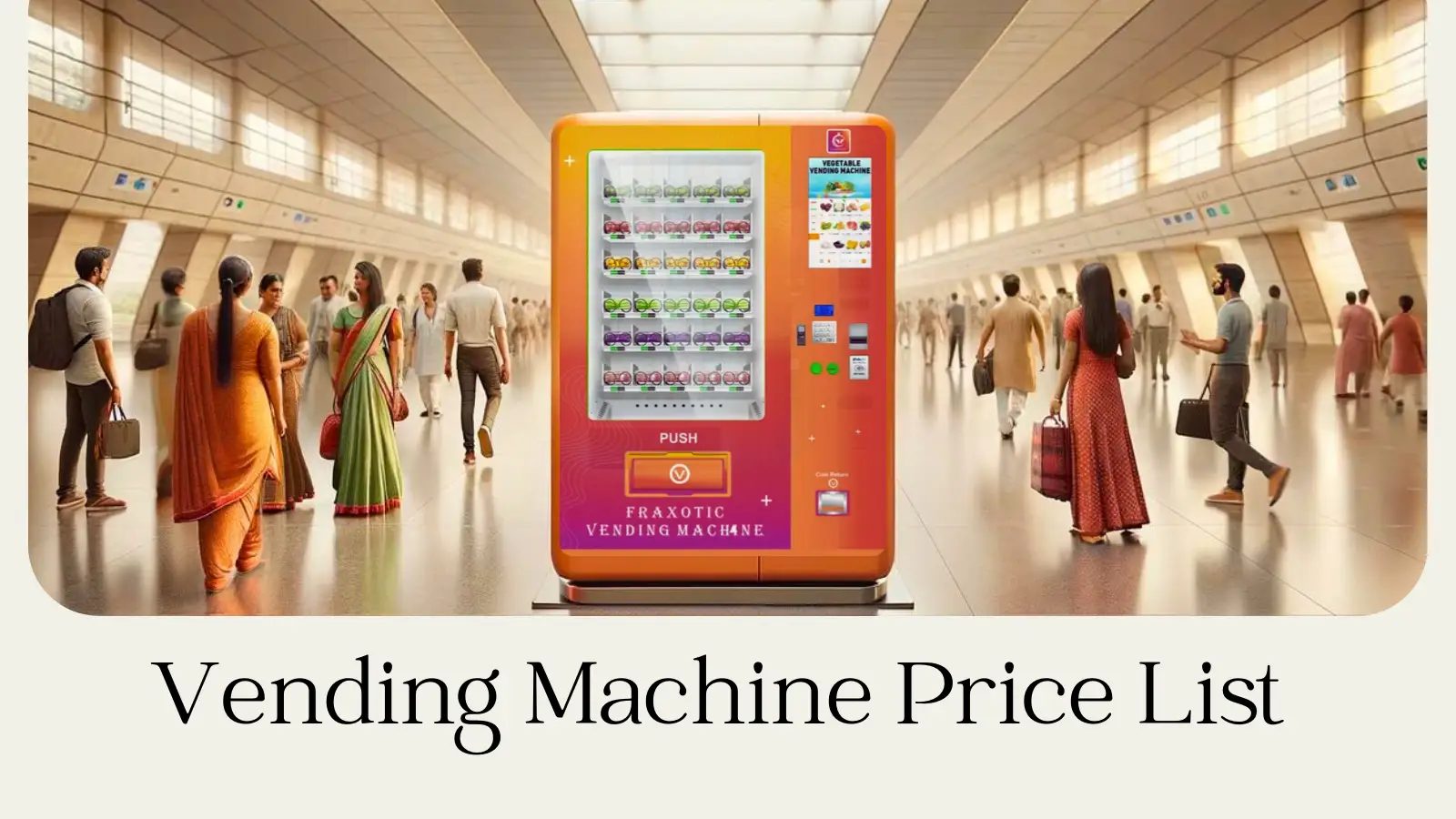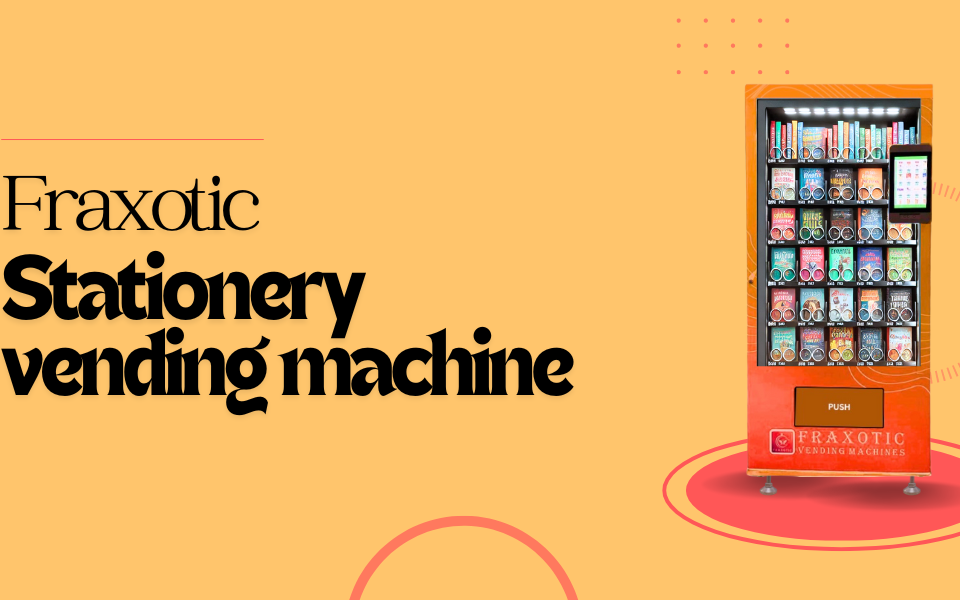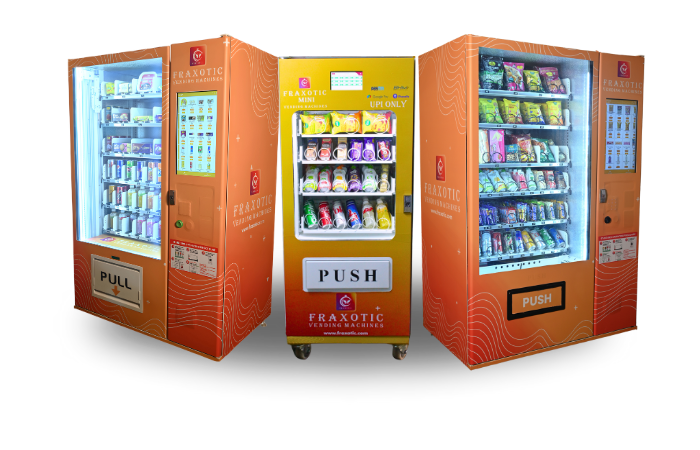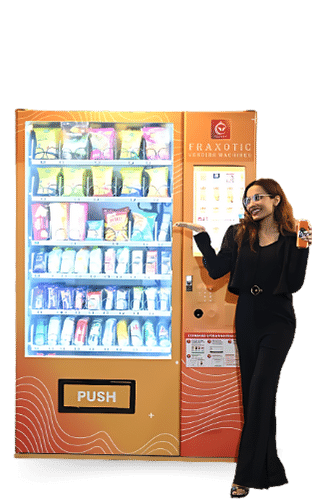
Which Country Has The Most Vending Machines?
May 13, 2024
How Many Drinks Can a Vending Machine Hold?
May 15, 2024Whether you’re a business owner looking to provide quick snack options for your staff or an entrepreneur exploring the vending machine industry, understanding the space requirements for a vending machine is essential. Let’s explore these specifications in detail.
Understanding Vending Machine Dimensions
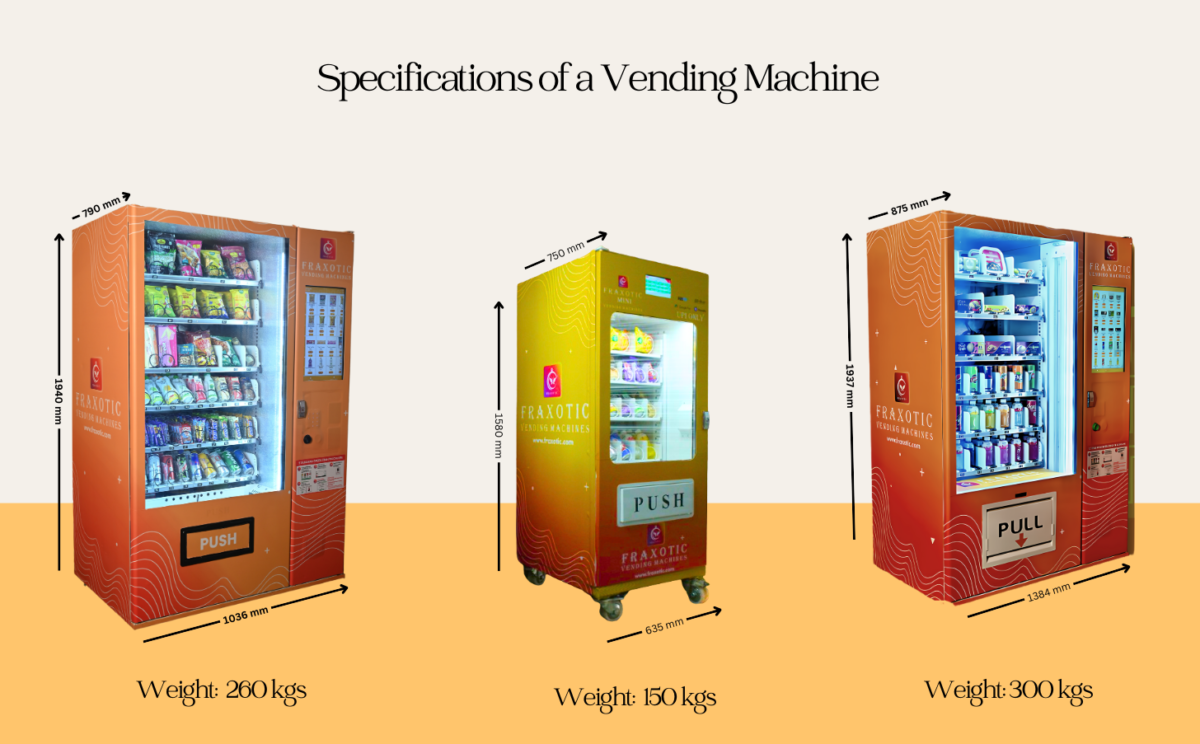
-
Standard Vending Machine Sizes The dimensions of vending machines can vary significantly depending on the type and specific model. Typically, a standard full-size snack vending machine is about 76 inches tall, 54 inches wide, and 34 inches deep. Beverage vending machines, on the other hand, might be slightly larger to accommodate a wider variety of bottle and can sizes, ensuring they can house an adequate stock of products.
- Custom Vending Machine Sizes For specialized needs, smaller, custom-designed vending machines are available. These are tailored for specific products such as coffee, ice cream, or electronics and are often constructed to fit into more constrained spaces, offering flexibility in placement and product offerings.
Space Requirements for Installation
- Physical Space for Placement and Operation: The primary consideration in installing a vending machine is ensuring sufficient space to accommodate the machine and allow for user interaction. Standard vending machines generally need about 1 meter in width and depth, with an additional half meter on each side and in front to prevent congestion and facilitate access in high-traffic areas.
- Accessibility for Service and Emergency Access: Adequate space must be reserved around and ideally behind the vending machine for maintenance and emergency access. A clearance of approximately 60 centimeters around the machine is recommended to allow easy access for servicing and to ensure it does not block emergency exits or firefighting equipment.
- Installation Logistics: Before installation, plan the logistics of transporting the vending machine to its location, taking into account door widths, elevator access, and obstacles like stairs. If narrow passages or stairs are involved, specialized equipment like stair-climbing dollies may be required, influencing the choice of machine size and type and helping avoid installation delays and extra costs.
Space for Maintenance and Restocking
- Accessibility for Service and Refill: It’s essential for vending machines to be easily accessible for maintenance and restocking. Service personnel need space around and sometimes behind the machine to refill products and perform repairs, ensuring the machine’s efficiency and longevity.
- Frequency of Restocking: Vending machines’ restocking frequency varies with their location and usage. High-traffic locations may need daily refills, while quieter spots might only require weekly or bi-weekly restocking, with sales tracking optimizing inventory schedules.
- Routine Maintenance Checks: Regular maintenance is crucial for the smooth operation of vending machines, helping to prevent malfunctions and customer dissatisfaction. Routine checks should assess the payment system, dispensing mechanism, and electrical components to address issues early and maintain reliability.
Legal and Regulatory Considerations
- Permits and Licenses
Operating a vending machine may require specific permits or licenses depending on local regulations. It’s crucial to obtain necessary documents such as the Food Safety and Standards Authority of India (FSSAI) license for machines dispensing food products, or a Trade License for general vending operations. Ensure you check these requirements well in advance to comply with the law and avoid any legal complications. - Planning Permissions
If you intend to place your vending machine outdoors or in a public space, you might need planning permission from local authorities. Always consult with your local council or governing body to verify compliance with all necessary regulations, ensuring your vending operations are legally sound and do not face interruptions.
Cost Implications of Vending Machine Space
Renting Space for a Vending Machine
- Location Variability: The cost of renting space for a vending machine can vary dramatically based on the location. High-traffic areas such as malls, airports, and large commercial complexes in cities like Mumbai, Delhi, or Bangalore may charge anywhere from ₹15,000 to ₹55,000 per month. In contrast, locations with less foot traffic or in smaller cities might cost between ₹5,000 to ₹10,000 per month.
- Footprint of the Machine: Larger machines that require more space may incur higher rental costs. For example, a standard beverage machine might cost more to place than a smaller coffee vending machine due to the difference in the space they occupy.
Installation Costs
- Logistics and Accessibility: The cost of installation depends significantly on the ease of access to the installation site. If a vending machine needs to be transported through narrow corridors, lifted through a stairwell, or installed in a location that requires special equipment for handling, the installation costs can increase. In general, the installation might cost between ₹2,000 to ₹10,000, varying with each scenario.
- Additional Setup Requirements: Additional setup requirements like electrical modifications, custom platform building, or securing the machine for outdoor use can also add to the cost. For instance, setting up a power outlet specifically for the machine, if not already available, could add an estimated ₹500 to ₹1,500 to the installation expenses.
Maximizing Vending Machine Space
Efficient Stocking Strategies To maximize profitability, it’s essential to stock vending machines thoughtfully. This involves prioritizing high-demand items and adjusting inventory based on sales data and customer preferences.
Optimal Location Selection The success of a vending machine heavily relies on its location. High-traffic areas typically yield higher sales, but they may also carry higher rental costs. Balancing visibility with cost is key to finding the ideal placement.
Conclusion
In conclusion, thoroughly understanding and managing a vending machine space requirements is essential. By carefully considering the unit’s physical size, installation needs, maintenance demands, legal constraints, and cost implications, you equip yourself to make well-informed decisions. This comprehensive approach ensures that your vending machine integration aligns with both operational necessities and regulatory standards, thereby enhancing the success and sustainability of your business or entrepreneurial venture.


